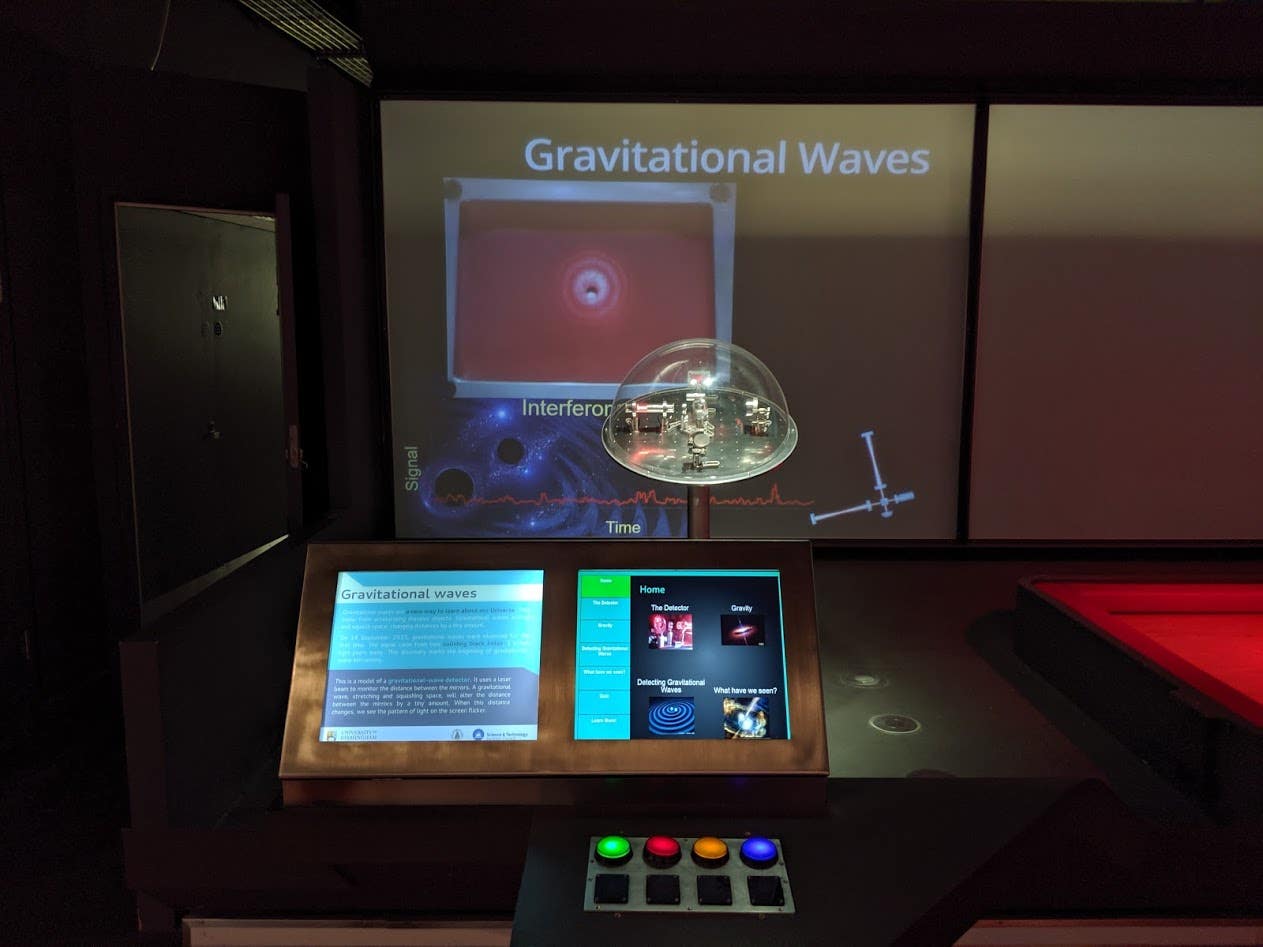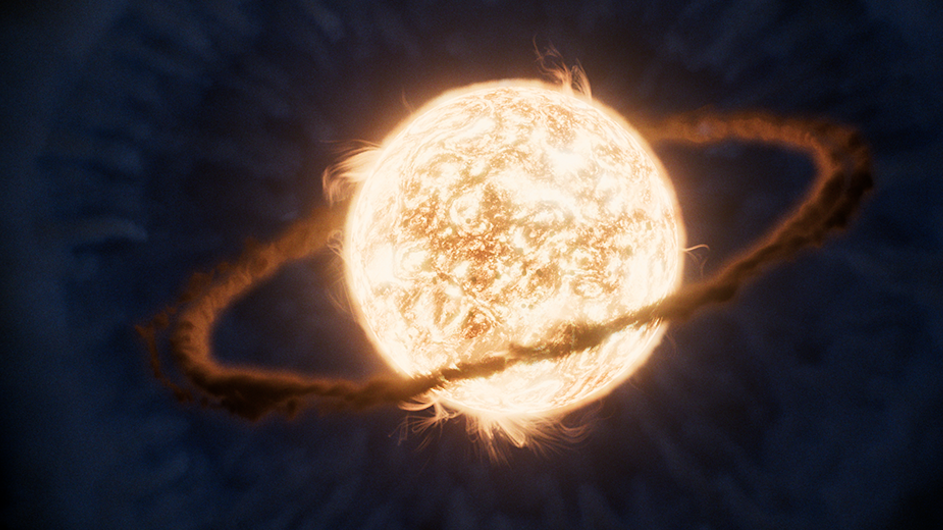Researchers create an interactive gravitational-wave detector for education and museums
Observations of gravitational waves in space have sparked public interest in space technology and an interactive exhibit will help explain

[August 12, 2021: University of Western Australia]
Observations of gravitational waves in space have sparked public interest in space technology and an interactive exhibit modeled on a real-life gravitational-wave detector is helping to explain this new field of science.
An exhibit is currently on display at the Gravity Discovery Centre in Gingin, and showcases how astronomy researchers at The University of Western Australia detect gravitational waves in space.
An international team, including researchers from the OzGrav ARC Centre of Excellence for Gravitational Wave Discovery (OzGrav), also created a model in the UK to communicate the new and unfamiliar field of gravitational-wave research to general audiences.
Researchers measured the exhibit's audience impact at a science festival, published in American Journal of Physics, and found that attendees were more knowledgeable and interested in physics after interacting with the exhibit, particularly girls and children aged 11 to 16 years.
The researchers also provided instructions online for others to construct their own versions.
The core element of the exhibit is a working Michelson interferometer: a scaled-down version of the key technology used in gravitational-wave detectors, which allows for user interaction and simulated gravitational-wave observations.
In a Michelson interferometer, laser light is split into two perpendicular beams by a beam-splitter; the beams of laser light traveling down the detector arms reflect off mirrors back to the beam-splitter where they recombine and produce an interference pattern.
If the relative length of the arms changes, the interference pattern will change.
Co-author and postdoctoral fellow Dr. Aaron Jones from the OzGrav UWA Instrumentation group said the exhibit allowed users to interact with the interferometer to input a simulated gravitational wave, providing a unique learning experience.
"It is fantastic to see young people from diverse backgrounds engaged and enthusiastic about STEM using the exhibit," Dr. Jones said.
Gravity Discovery Centre manager Jan Devlin, said the Centre's hands-on interactive Interferometer display was amongst the first exhibits installed at the Gravity Discovery Centre.
"It plays an important role in inspiring and educating students and the public about the detection of gravitational waves, black holes and spacetime," Ms Devlin said.
National Science Week, Australia's annual celebration of science and technology, runs from August 14 to 22, and aims to inspire students to pursue a career in science.
For more innovation news stories check out our Innovations section at The Brighter Side of News.
Like these kind of feel good stories? Get the Brighter Side of News' newsletter.
Tags: #New_Innovations, #Museums, #Education, #Gravity, #The_Brighter_Side_of_News
Joseph Shavit
Head Science News Writer | Communicating Innovation & Discovery
Based in Los Angeles, Joseph Shavit is an accomplished science journalist, head science news writer and co-founder at The Brighter Side of News, where he translates cutting-edge discoveries into compelling stories for a broad audience. With a strong background spanning science, business, product management, media leadership, and entrepreneurship, Joseph brings a unique perspective to science communication. His expertise allows him to uncover the intersection of technological advancements and market potential, shedding light on how groundbreaking research evolves into transformative products and industries.



